Writing desks are often a much-admired antique, conjuring memories of romantic letter writing and the handwritten words of famous authors, politicians and royalty. These historic pieces of furniture may have clear signs of a practical past, such as a well-used ink well and abraded edges, as well as pieces of perishing leather and felt or dysfunctional joins. Whilst some signs of use may be important to the history of the furniture, it should also be noted that some historic stains or damages can compel a deterioration of the structure and appearance of the piece – this is where our furniture experts step in to offer a historically sensitive restoration with an appropriate level of rejuvenation.
This article will cover the history and styles of writing desks and writing slopes you may come across in auction houses, antique shops or at home. We will also look into the typical damages faced by these fascinating items of furniture, including how to avoid deterioration through easy routine maintenance and professional care.
History, materials & design
The oldest examples of sloped writing desks in European interiors typically date no earlier than the 17th century. The earliest examples were primarily used as bible boxes – a small chest with a slanted lid, or small writing boxes for travel. These boxes were often covered in a woollen cloth, known as a ‘bure’ in French – this is the origin of the word bureau.
 Above: a 17th century box, these may have kept writing materials or had slanted tops to write upon
Above: a 17th century box, these may have kept writing materials or had slanted tops to write upon
Many early writing desks were designed for the writer to stand rather than sit, as this is what they had previously been accustomed to. The first examples of desks as we know them today were often chests of drawers that had an adaptation of a writing slope that could be opened up or put away, as part of the bureau. The need for this piece of furniture became more dominant throughout the 18th century as the writing of letters and publications became a bigger part of society.
 Above: an early 18th century chest of drawers and desk combination (left), a late 18th century standing writing and music slope (centre) and a mid-18th century bureau-table (right)
Above: an early 18th century chest of drawers and desk combination (left), a late 18th century standing writing and music slope (centre) and a mid-18th century bureau-table (right)
Queen Anne style writing desks from the early 18th century are more often constructed from a typically British timber such as oak or a walnut veneer, whist later pieces may feature exotic wood such as mahogany and ebony. You may also come across features of marquetry on the outer casing, along with Thomas Chippendale designs (click here to find out more about Chippendale furniture). During the Queen Anne period, the first drop-down desks also came into use, where the lid falls forwards to produce a writing surface, rather than folding back.
 Above: a roll-top desk with Chinoiserie inlay features dated to 1776–79
Above: a roll-top desk with Chinoiserie inlay features dated to 1776–79
Writing desks required storage areas for the paraphernalia required when producing handwritten work, such as quills, ink, and parchment – as desks developed in style and grandeur, you may find more interior drawers and even hidden compartments. Some desks may have drawers down each side in place of legs, whilst others may have more built above the writing area, such as a bookcase or shelving to make a tall secretaire.
 Above: a small desk with neoclassical features and floral marquetry designs dated to 1765
Above: a small desk with neoclassical features and floral marquetry designs dated to 1765
Early 19th century writing desks may include regency favourites such as beautiful birdseye maple veneers and neoclassical elements. Victorian furniture is more likely to be more industrial, with new technology allowing for thinner veneers and precise joins. Many design styles can be found from this period, from grand gothic features to simple, naturally inspired motifs from the arts and crafts movement.
 Above: a 19th century secretary with an inbuilt desk and gothic features, dated to 1836–50
Above: a 19th century secretary with an inbuilt desk and gothic features, dated to 1836–50
Roll tops are a popular feature of early 20th century desks, however, they can be dated back to the reign of Louis XV with designs from renowned cabinet maker Jean Francios Oeben. A flexible casing is known as a tambour, often created from several thin pieces of wood connected to a linen backing, this is usually barrel-shaped, but some Victorian designs have an ‘s’ curve. Some bureaus may have a complete drum that does not flex but fits back perfectly into the casing, known as a cylinder fall. Due to their functional nature and fragility, tambour and cylinder tops may have broken, become stuck or deteriorated over time, requiring professional restoration. However, roll-top writing desks remain popular antiques whether they are a regency era classic or a mid-century design.
 Above: a detail of a regency era desk with tambour doors in the front
Above: a detail of a regency era desk with tambour doors in the front
Common reasons for antique desk restoration
Our team often restore desks for a wide variety of reasons, but these are some of the most common examples of damage and wear that can result in the need for professional repair:
- Broken veneers, mouldings or edging
- Leather writing surfaces in need of historically appropriate replacement
- Broken or jammed roll tops and tambour elements
- Locks with breakages or losses
- Broken drawers
- Ink and water staining
- Missing or broken brass handles
- General wear and abrasions
- Wobble or tilt from uneven legs or loose joins
 Above: examples of writing desks in paintings from 1655 and 1890
Above: examples of writing desks in paintings from 1655 and 1890
Antique writing desk care
Over decades a piece of antique furniture can actually build up its resilience to the environment and spillages through careful and regular maintenance. Annual waxing and polishing with antique-appropriate treatments will help to build up a patina. Natural beeswax products are much safer than modern chemicals – but for particularly important items or those with damaged areas, we recommend that our professional team step in to help.
 Above: a variety of damages can occur to desk surfaces over time, waxing will help to protect against staining
Above: a variety of damages can occur to desk surfaces over time, waxing will help to protect against staining
Appropriate environmental conditions can allow well-made wooden furniture to survive for centuries without harm – the key is to prevent recurring and extreme fluctuations in temperature and humidity to avoid constant expansion and contraction of the materials. Antique furniture may have been kept in naturally ventilated and unheated rooms for hundreds of years, and the introduction of central heating could deteriorate their structure. The perfect temperature is around 20 degrees celsius alongside an even 40-50% humidity. Very high humidity may cause warping or encourage mould growth, whilst a dry atmosphere can also cause the timber to splinter and distort, so it is important to keep this aspect under control.
 Above: drawers on chests and desks can be professionally restored with a historically appropriate finish
Above: drawers on chests and desks can be professionally restored with a historically appropriate finish
Leather surfaces can in some cases be revived with a lanolin-based ointment, but only if they are in good condition and relatively modern. Valuable and historic leather elements, as well as those that have broken areas, should only be cleaned and restored by an expert.
 Above: an antique desk is often a practical piece of furniture, facing everyday disturbances from abrasions, ink, paint and atmospheric changes
Above: an antique desk is often a practical piece of furniture, facing everyday disturbances from abrasions, ink, paint and atmospheric changes
As functional pieces of furniture, desks may have often encountered spillages, whether this is from water, ink or other substances. As long as the polished surface is strong and intact, any exterior dirt can be easily cleaned away with a damp cloth or very diluted vinegar. Water stains should be left to dry naturally with any excess moisture soaked up as quickly as possible. White marks under varnish, dark watermarks, or ingrained stains, should only be removed by professionals – especially if the desk is of high value and antique. Avoid the use of modern furniture polishes and household cleaning products, as these chemicals can deteriorate the finish over time and may react badly with historic timber.
 Above: water stains and loss of finish can be expertly restored in our studio
Above: water stains and loss of finish can be expertly restored in our studio
Sticking drawers or rolling tops that are difficult to open and close, should never be forced. To avoid a tight or stuck element from worsening, a small amount of candle wax may help to smooth the surface and protect the wood. If you are still encountering issues, our team can provide historically appropriate repairs.
Davenport writing desk restoration
A recent restoration in our studio was a Victorian Davenport desk. Featuring an attractive burr walnut surface, this small but charming piece of furniture was of great importance to our client’s family and came to the attention of our expert team in need of several repairs.
 Above: the Davenport desk before and after professional restoration
Above: the Davenport desk before and after professional restoration
Historically sensitive restoration treatments were proposed, aimed at treating missing or broken veneers and unstable areas. The first step was a sensitive surface clean along with the removal of the old leather top, which was beyond repair. The surface was then stripped back, allowing our experts to remove areas of disturbance and to carefully match any new veneers to the original wood grain.
 Above: the drawers were restored including the repair of a horizontal crack and missing handles
Above: the drawers were restored including the repair of a horizontal crack and missing handles
Two of the drawers featured a large horizontal crack, to restore this our team took off the veneer and filled it for an even surface. They also replaced old and deteriorating drawer veneers for further stability within these vulnerable areas. New drawer knobs were also provided, all created from matching timber and carved to a historically correct shape. The extendable shelf at the back of the desk was also strengthened to allow for ongoing practical use.
 Above: the restoration and recolour-matching of new veneer areas to stabilise and revive the deteriorating areas
Above: the restoration and recolour-matching of new veneer areas to stabilise and revive the deteriorating areas
Any loose mouldings were re-adhered with a historically appropriate glue and missing edge details were replaced with an accurate recreation. The desk was finished with a professional french polish and wax, allowing the details of the burr walnut to show through beautifully.
Desk leather restoration
During the restoration of the Davenport desk, our team sourced a new leather surface to replace the original as it was beyond the possibility of a full repair. This was sought to be accurate to the historic style, as well as the exact material and size of the original. The rejuvenated writing surface allowed the desk to return to its original appearance and ongoing use as family furniture.
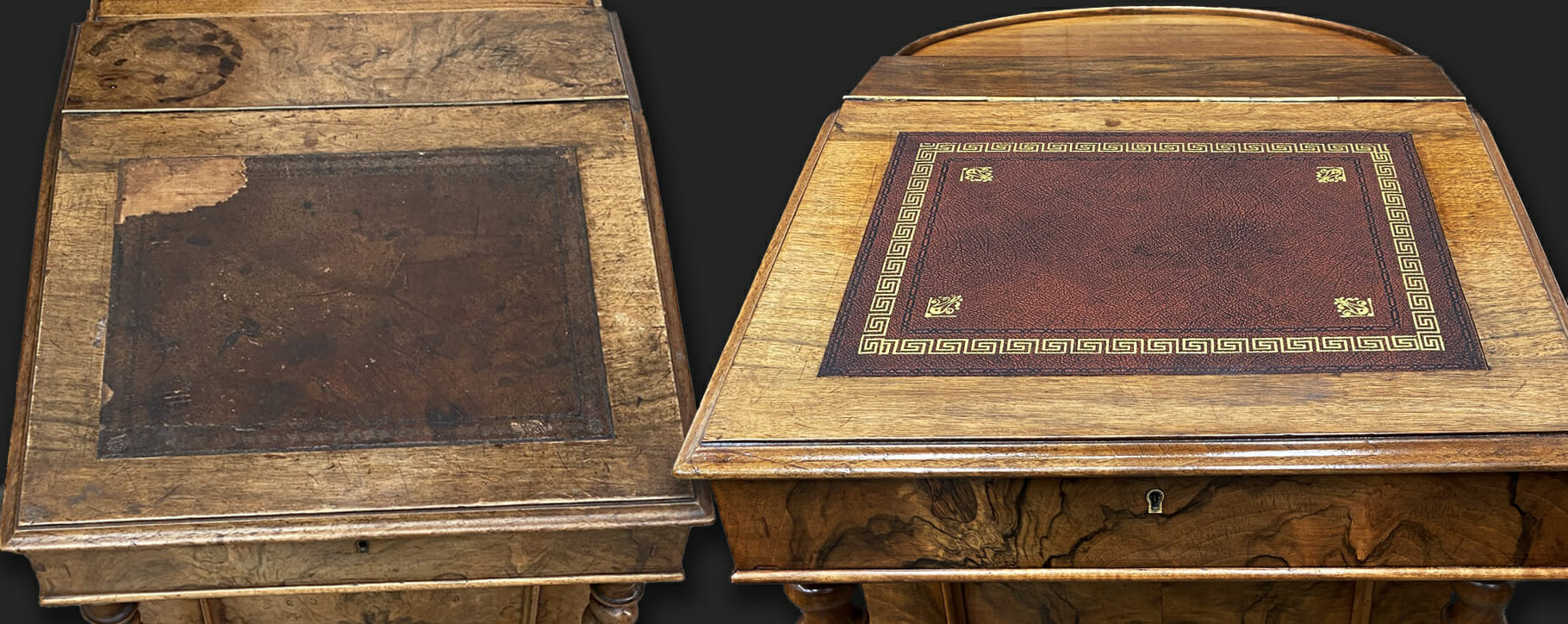
Desk leather can be replaced on all manner of desks, and in some cases, the original leather can be restored or professionally cleaned. Leather is one of the most frequently damaged elements of antique desks due to its practical use, but historically appropriate replacements can be found to ensure the furniture is as close to its original appearance as possible.
Above and below: there is a wide variety of tooling patterns to choose from to suit your desk’s history or your favoured design style

Options for leather replacements include many different colours and tooling patterns, these can be chosen to be accurate to the style and era of your desk or to suit your personal style. Below is a selection of leather you can choose from, see above for tooling patterns and motifs that can create a custom design.
 Above: a selection of leather colours available for new writing panels
Above: a selection of leather colours available for new writing panels
How can we help?
If you have an antique desk in need of restoration, cleaning or professional french polish, please contact our team for further advice on how our experts can assist you further. Or visit our desk leather restoration page.
Please get in touch by emailing [email protected] or call 0207 112 7576 for swift advice and a conversation about our services.

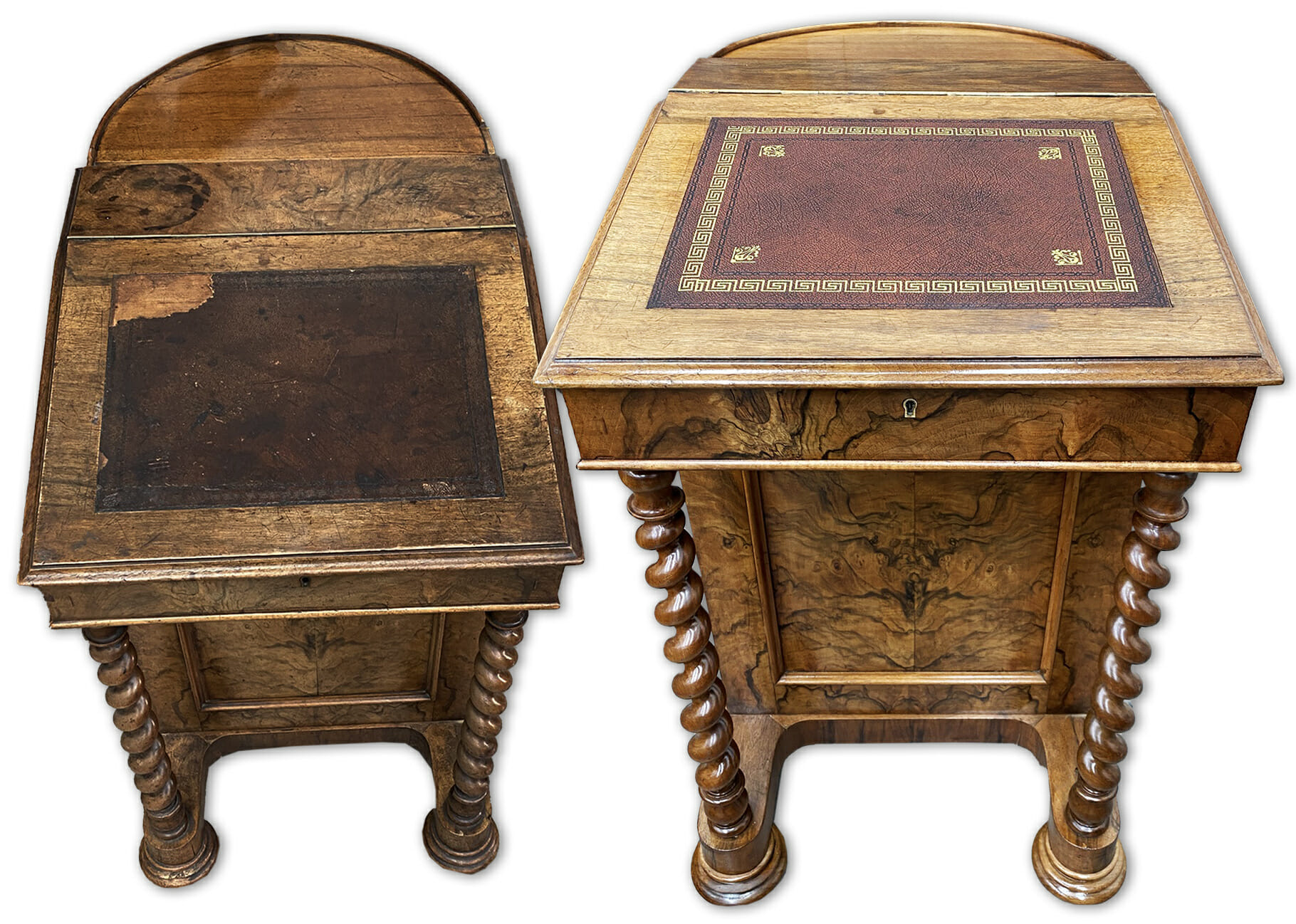
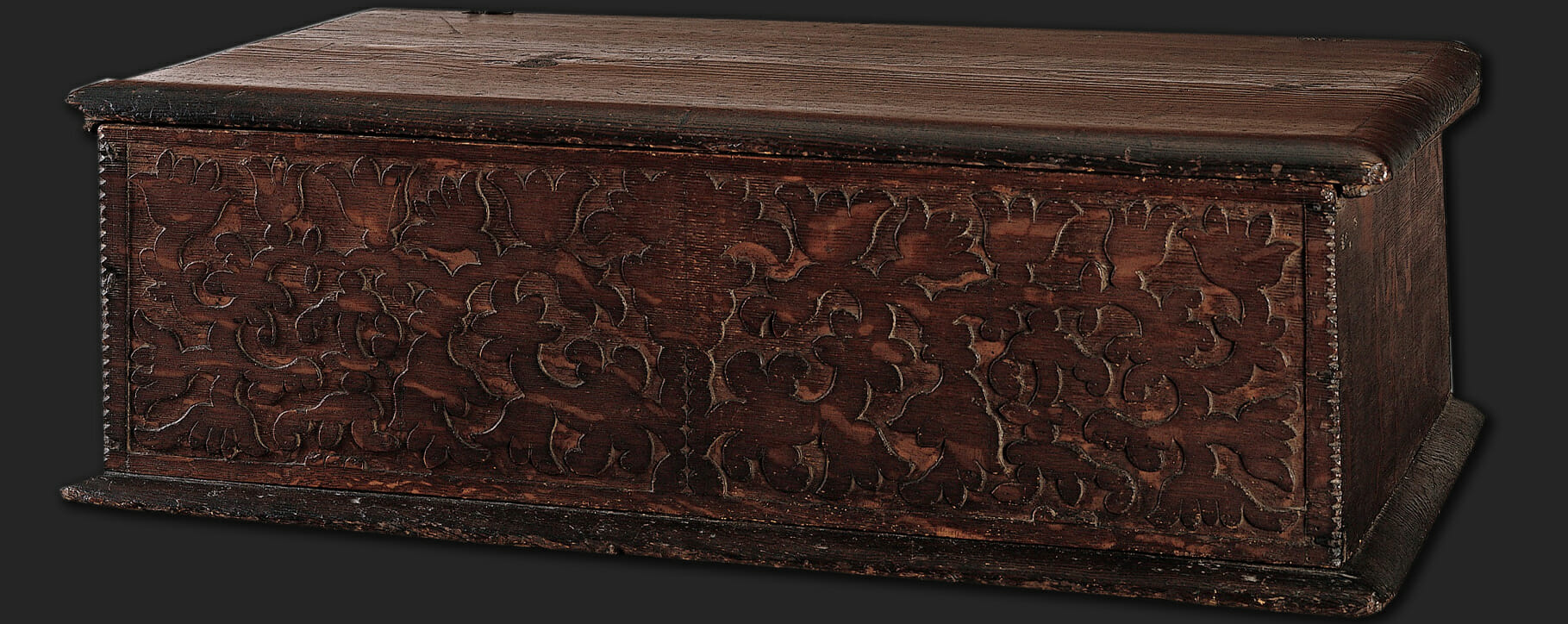 Above: a 17th century box, these may have kept writing materials or had slanted tops to write upon
Above: a 17th century box, these may have kept writing materials or had slanted tops to write upon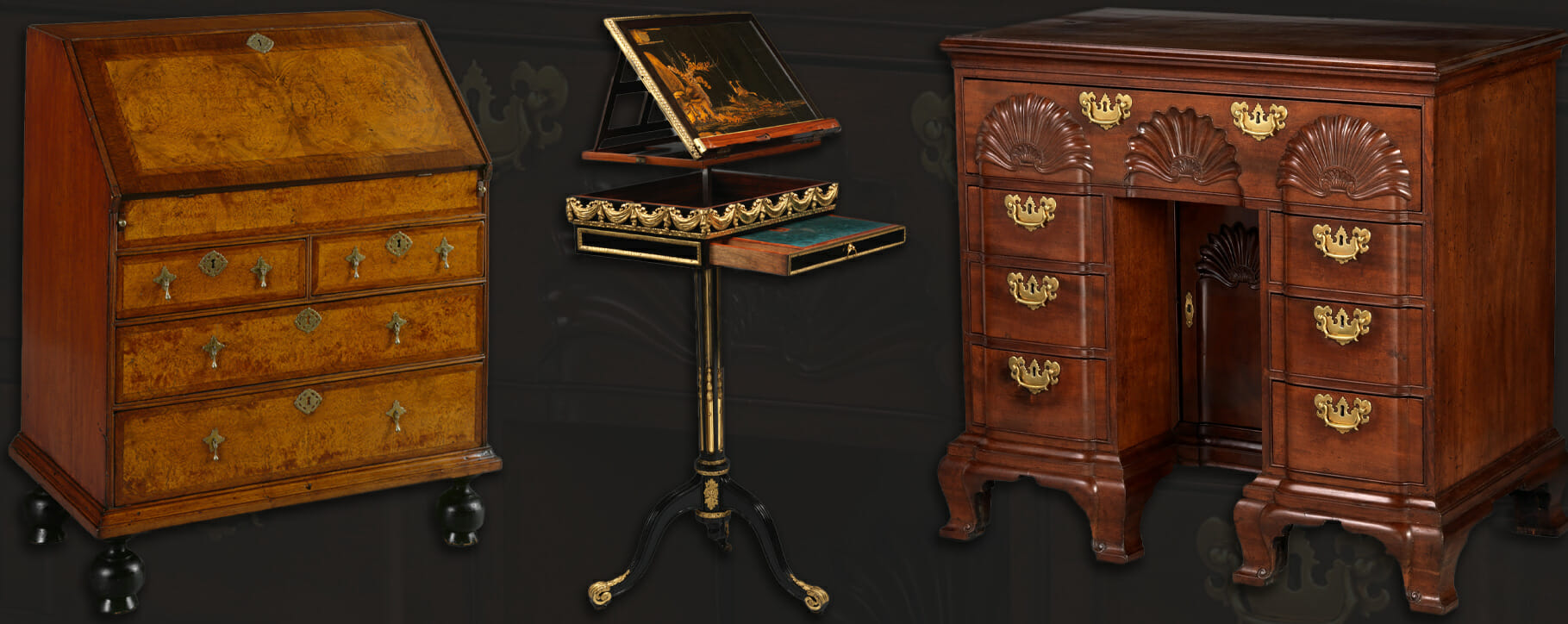 Above: an early 18th century chest of drawers and desk combination (left), a late 18th century standing writing and music slope (centre) and a mid-18th century bureau-table (right)
Above: an early 18th century chest of drawers and desk combination (left), a late 18th century standing writing and music slope (centre) and a mid-18th century bureau-table (right) Above: a roll-top desk with Chinoiserie inlay features dated to 1776–79
Above: a roll-top desk with Chinoiserie inlay features dated to 1776–79 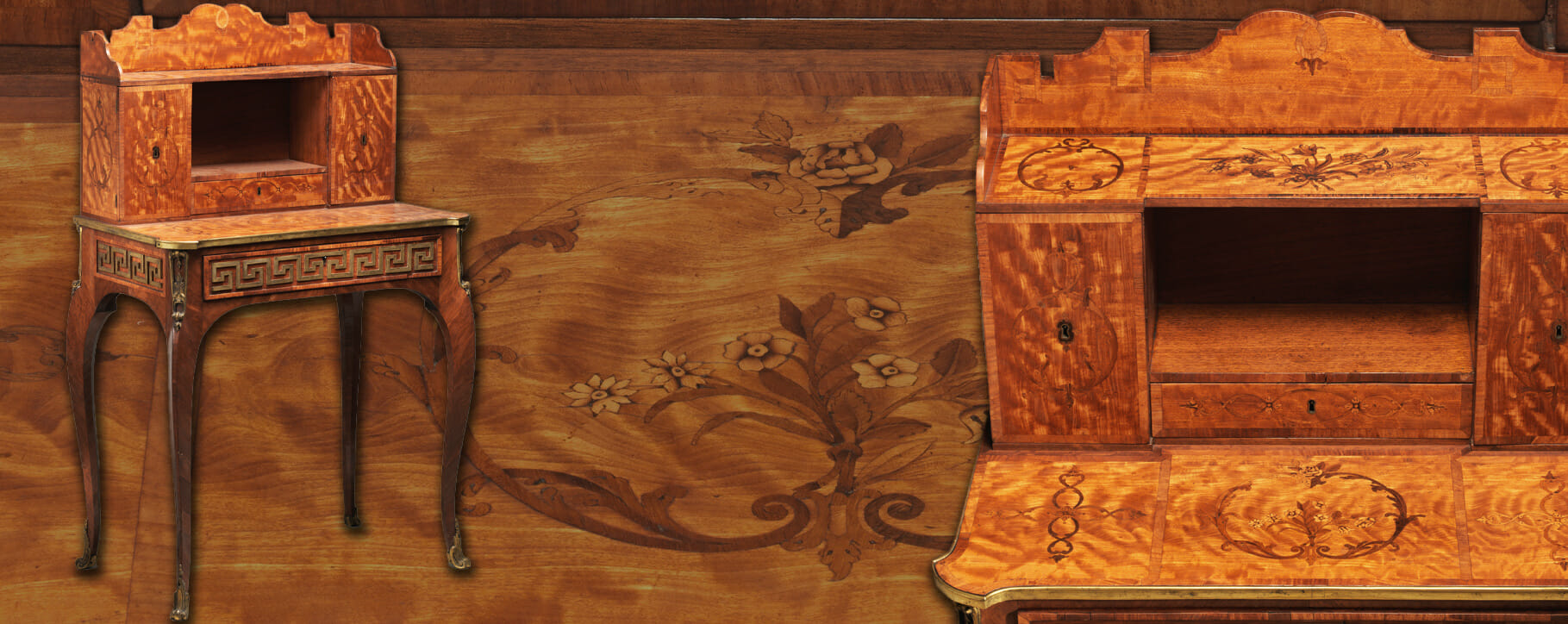 Above: a small desk with neoclassical features and floral marquetry designs dated to 1765
Above: a small desk with neoclassical features and floral marquetry designs dated to 1765 Above: a 19th century secretary with an inbuilt desk and gothic features, dated to 1836–50
Above: a 19th century secretary with an inbuilt desk and gothic features, dated to 1836–50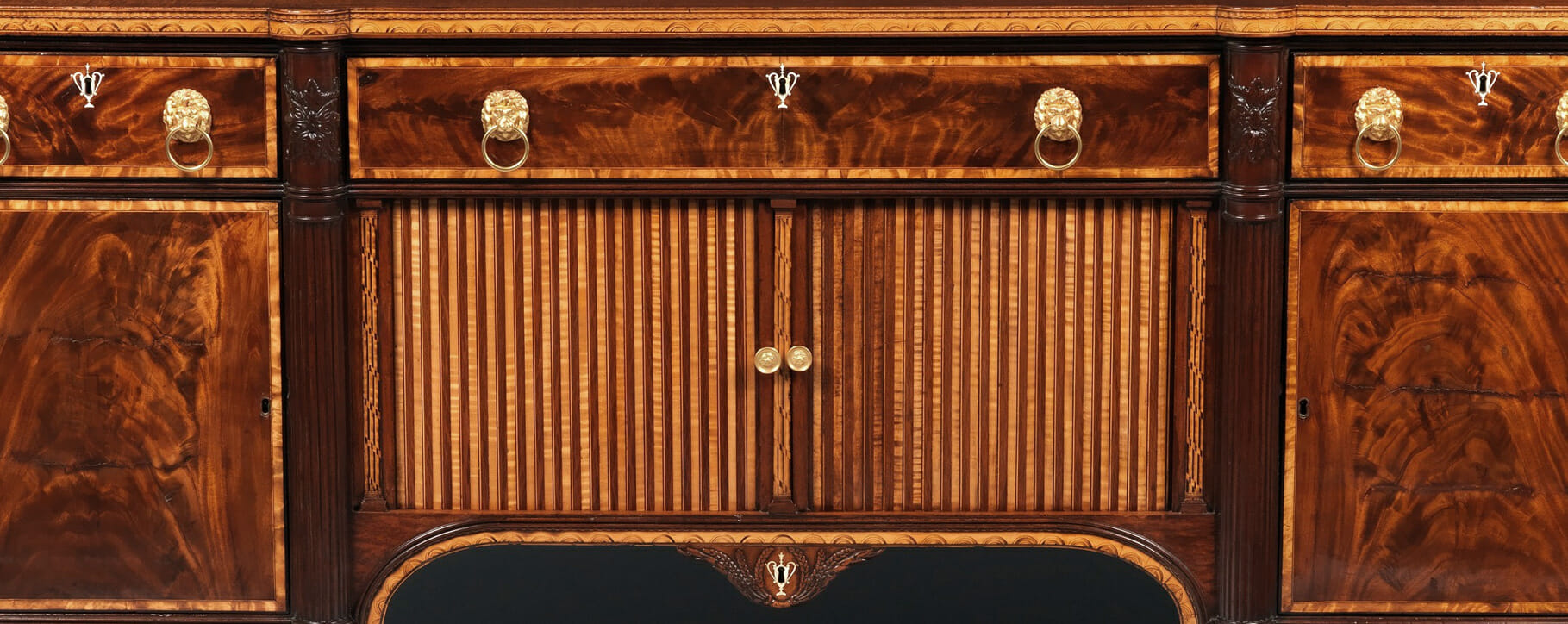 Above: a detail of a regency era desk with tambour doors in the front
Above: a detail of a regency era desk with tambour doors in the front Above: examples of writing desks in paintings from 1655 and 1890
Above: examples of writing desks in paintings from 1655 and 1890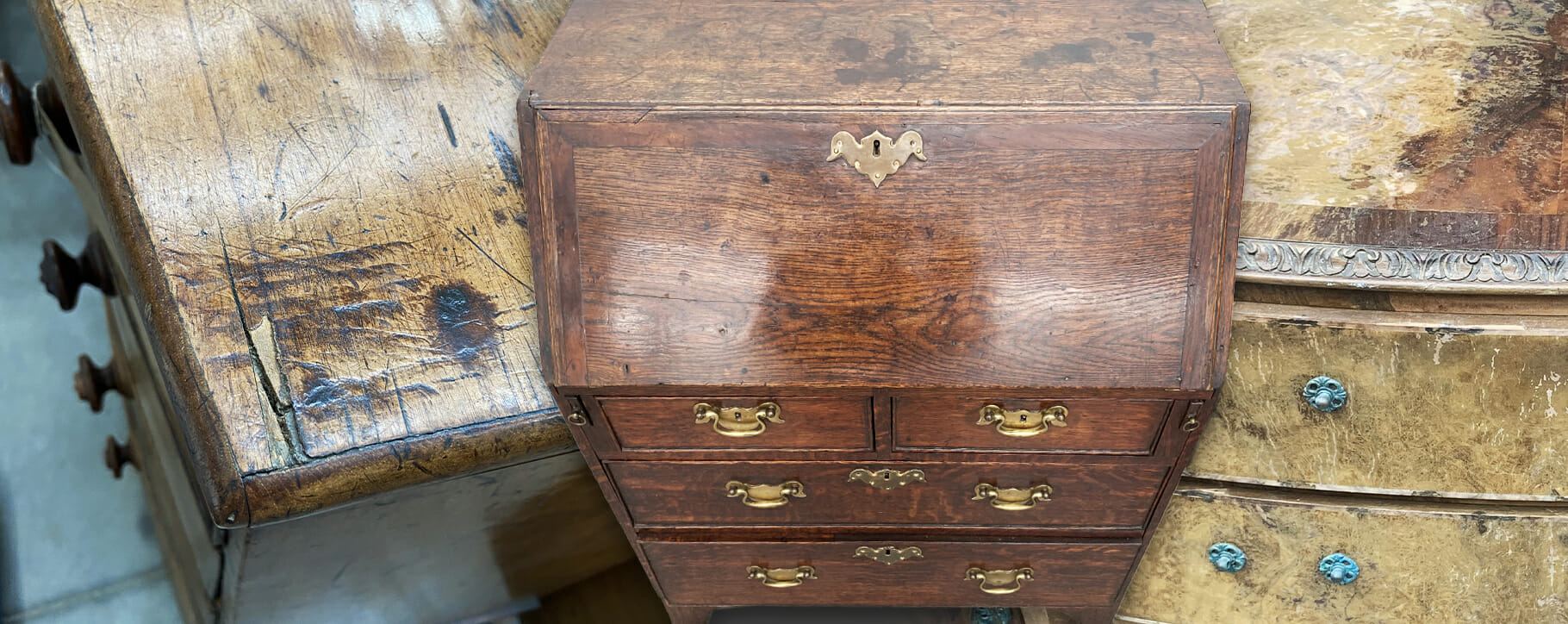 Above: a variety of damages can occur to desk surfaces over time, waxing will help to protect against staining
Above: a variety of damages can occur to desk surfaces over time, waxing will help to protect against staining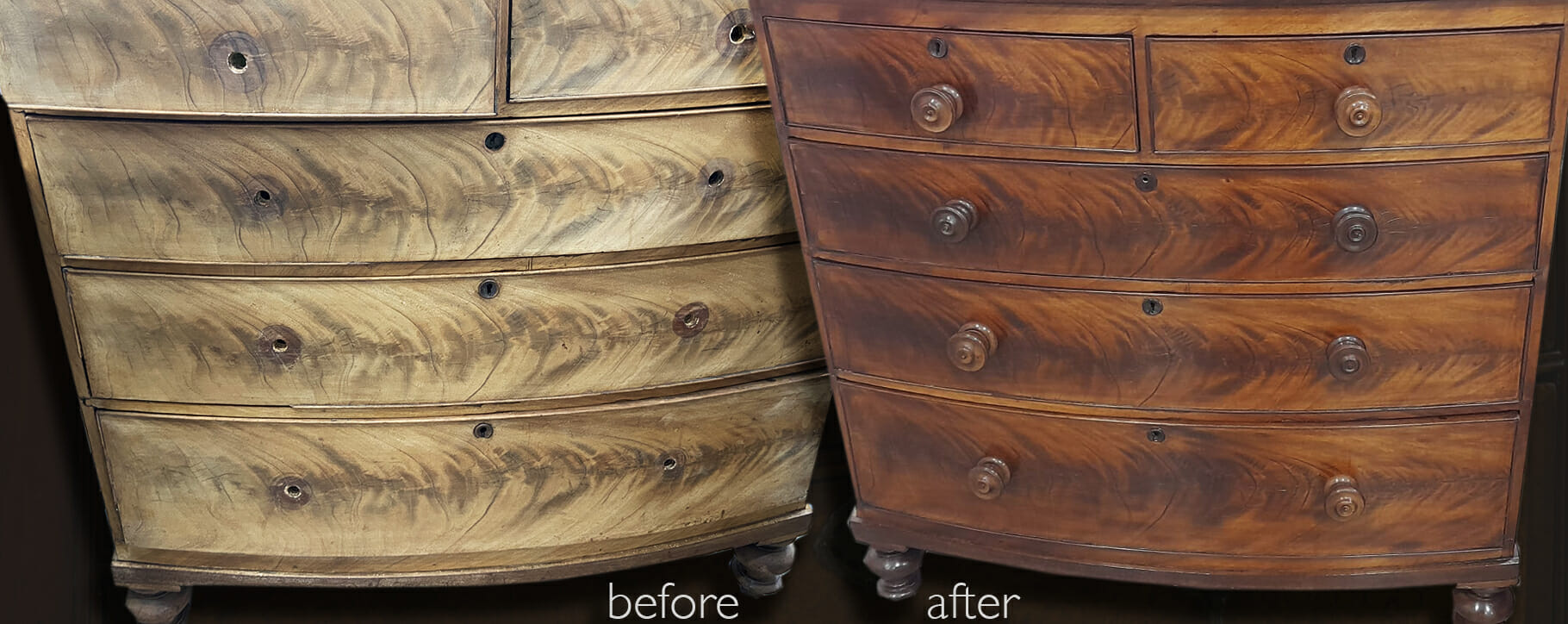 Above: drawers on chests and desks can be professionally restored with a historically appropriate finish
Above: drawers on chests and desks can be professionally restored with a historically appropriate finish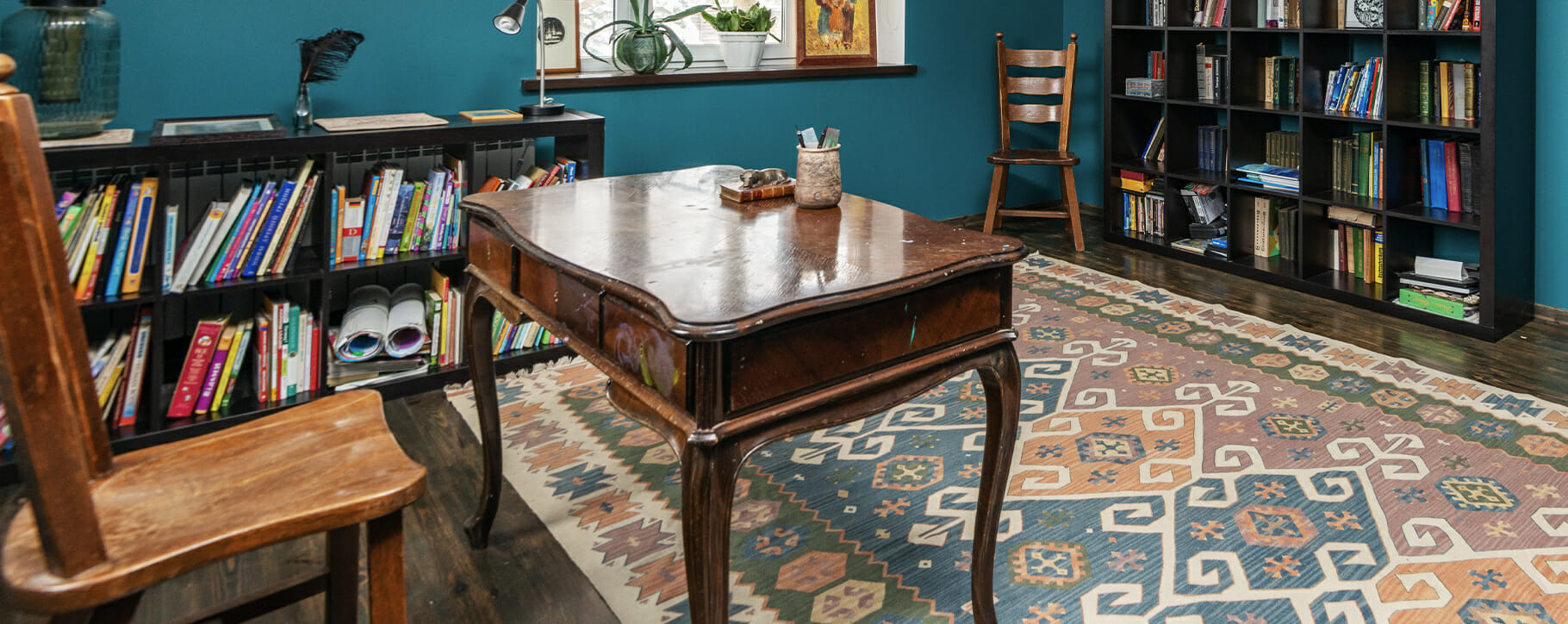 Above: an antique desk is often a practical piece of furniture, facing everyday disturbances from abrasions, ink, paint and atmospheric changes
Above: an antique desk is often a practical piece of furniture, facing everyday disturbances from abrasions, ink, paint and atmospheric changes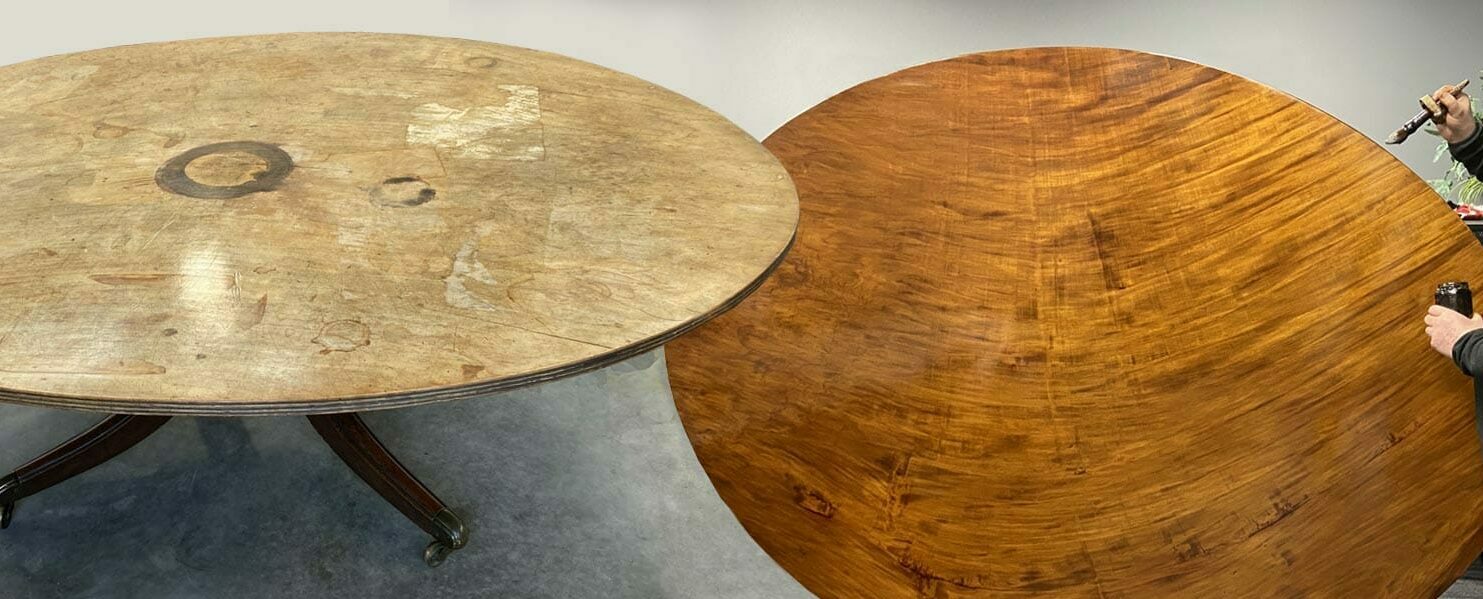 Above: water stains and loss of finish can be expertly restored in our studio
Above: water stains and loss of finish can be expertly restored in our studio Above: the Davenport desk before and after professional restoration
Above: the Davenport desk before and after professional restoration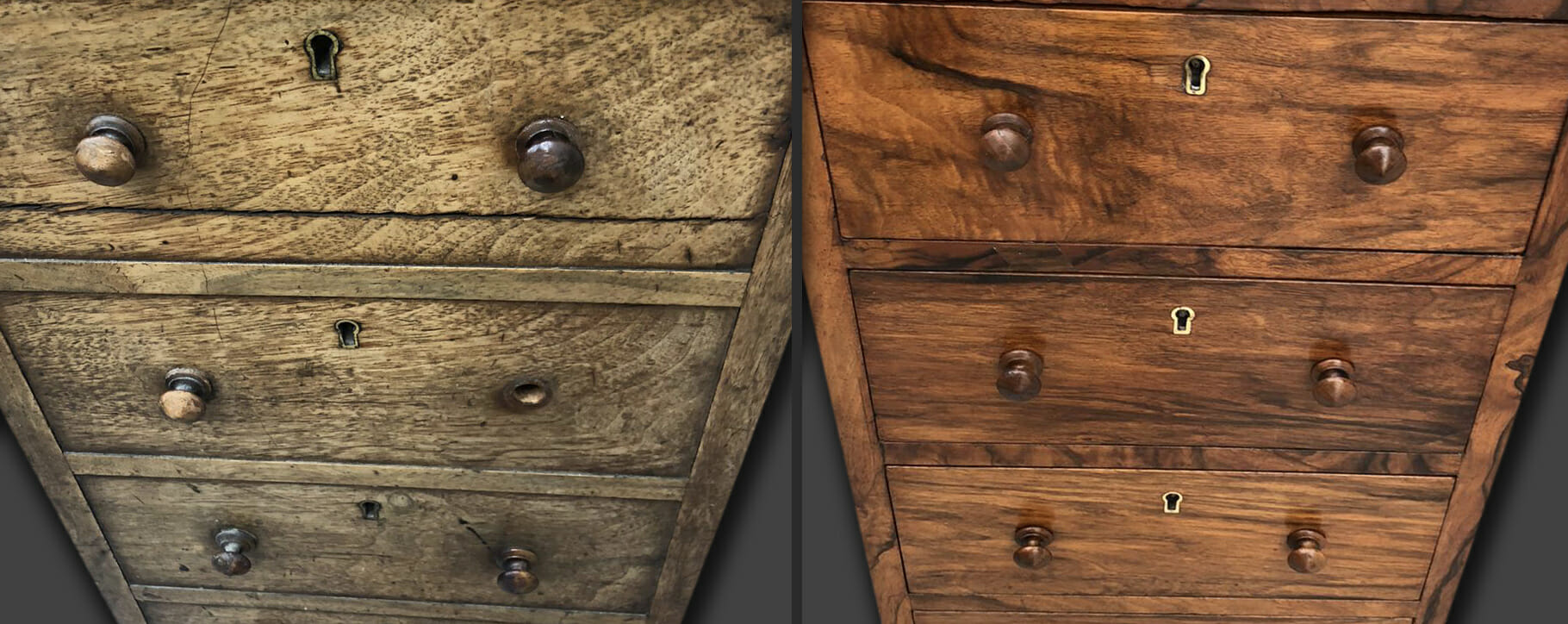 Above: the drawers were restored including the repair of a horizontal crack and missing handles
Above: the drawers were restored including the repair of a horizontal crack and missing handles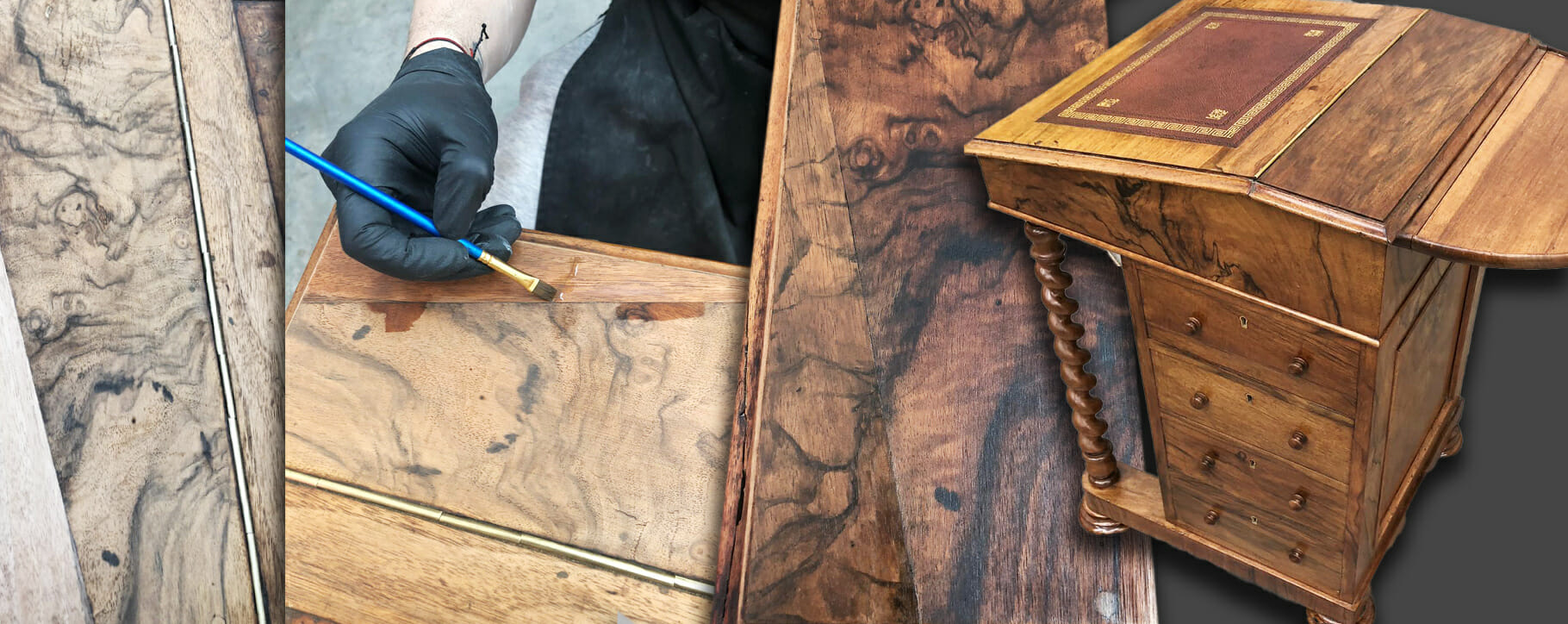 Above: the restoration and recolour-matching of new veneer areas to stabilise and revive the deteriorating areas
Above: the restoration and recolour-matching of new veneer areas to stabilise and revive the deteriorating areas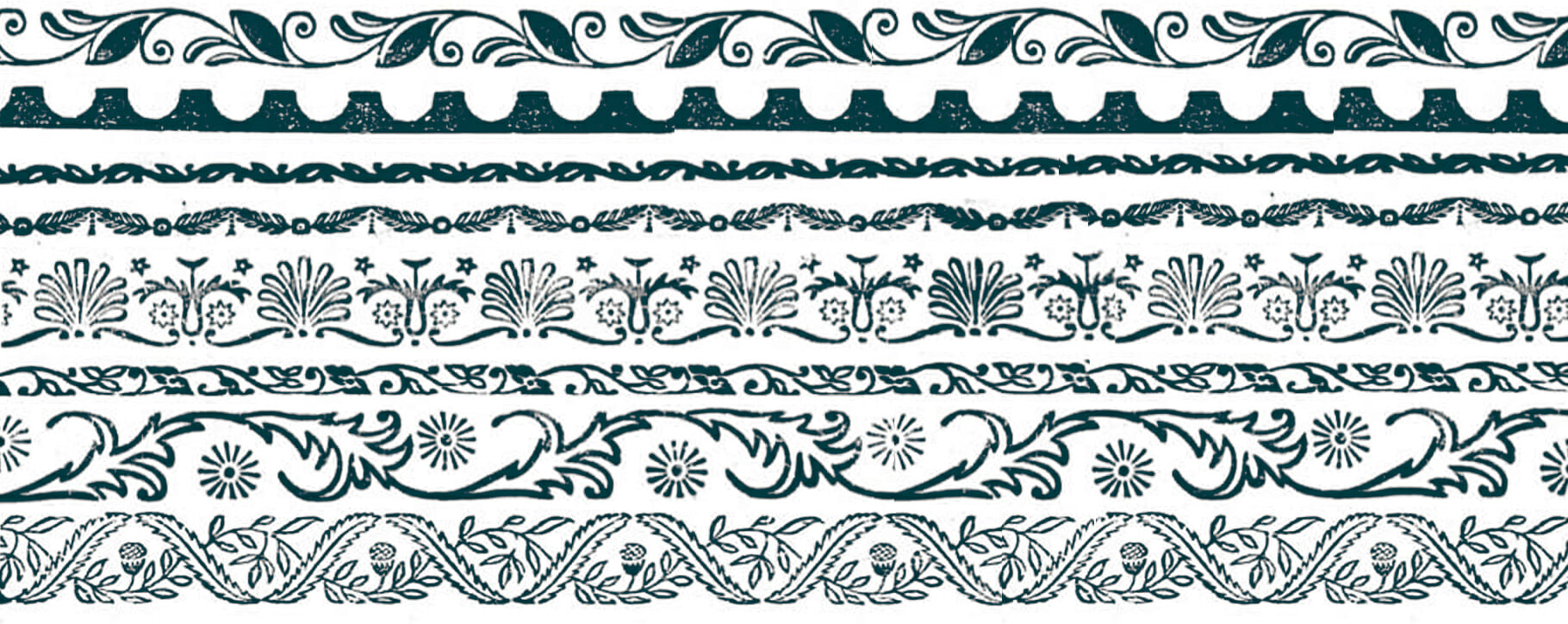
 Above: a selection of leather colours available for new writing panels
Above: a selection of leather colours available for new writing panels 




